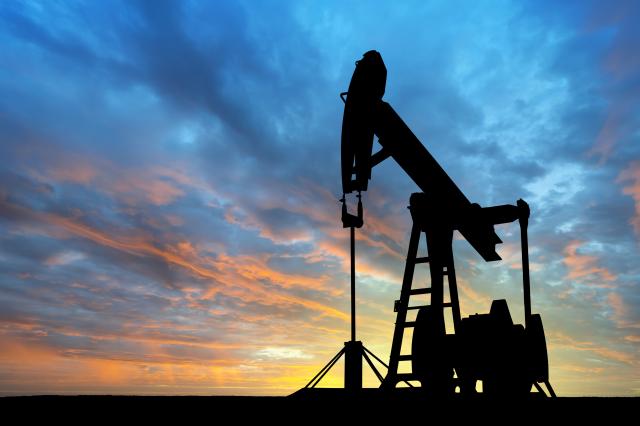
Proper lubricant selection can improve equipment functionality. (Source: ExxonMobil)
Keeping vital production equipment online is every oil and gas producer’s top priority, but achieving this goal will only get harder in the years to come. ExxonMobil’s annual “Outlook for Energy: Journey to 2040” report projects that energy demand will grow by about 25% over the next 23 years. And, in 2040, it projects that oil and gas will still account for 57% of the total energy mix.
To meet that energy demand, producers will have to turn to oil and gas reserves that are in more remote locations with deeper wells and more extreme operating conditions. Equipment will be pushed harder than ever before, facing harsh conditions such as more extreme temperatures, heavier loads and greater exposure to damaging contaminants.
Fortunately, even small changes to an oil and gas operation can have a big impact on equipment performance and longevity.
Lubricants are the lifeblood of any industrial machine, and they are fundamental to enhancing equipment performance, efficiency and uptime. However, lubricant performance can vary widely, and understanding what characteristics to look for in a lubricant and how to best measure lubricant performance in real time is critical to success.
Protecting equipment from the harsh conditions of a typical oil and gas operation will require making smart lubrication decisions. Making the right decisions can mean the difference between ensuring reliable longterm production and dealing with repeated unscheduled downtime.
No shortcuts
With lubricants, like with most other products, you get what you pay for. Only the best products formulated specifically to perform for the demanding conditions of a given application can deliver the protection that oil and gas operators need.
Instead of using conventional mineral-based lubricants, operators should consider using synthetic lubricants, which utilize advanced additive technologies that can help protect against conventional wear modes. This protection leads to better equipment protection, durability and, ultimately, enhanced reliability.
These lubricants are worth the initial upfront investment since they often offer significant long-term benefits that deliver cost savings over the course of the equipment life.
Consider the following real-world example. In 2015 a large oil and gas producer was running a White Superior 12GTL natural gas engine on a conventional mineral-based oil. The company wanted to reduce oil consumption and extend oil drain intervals from 4,000 hours to 16,000 hours to help increase productivity and reduce overall operations and maintenance costs.
Engineers suggested converting the engine to a synthetic lubricant. With that simple switch the unit reached more than 20,000 hours on the same amount of oil before a coolant leak required an oil change. This reduced oil usage by more than 1,000 gal/year, and the oil demonstrated outstanding oxidation performance over that period, meaning better equipment protection over the long haul.
These equipment benefits are significant, but why exactly are advanced lubricants such as synthetics typically better than most conventional lubricants?
Here are a few reasons:
- The high viscosity index of fully synthetic lubricants can help equipment perform better at higher temperatures since the oil will remain more viscous compared to conventional mineral-based oils. This ensures that the oil can maintain sufficient film thickness to deliver adequate lubrication, thus helping protect against wear and reducing the risk of metal-to-metal contact that often causes permanent equipment damage;
- Components such as bearings are particularly susceptible to wear, and bearing failure is a leading cause of unplanned mechanical failure of rotating equipment, resulting in production losses. Synthetic lubricants specifically formulated to protect against wear can help address some equipment failures;
- Synthetic lubricants have much greater oxidation resistance than conventional mineral-based oils, which is a key factor in determining oil life. Some synthetic lubricants have been shown to extend oil life up to six times longer than conventional oils, particularly at elevated operating temperatures; and
- Synthetics can extend oil drain intervals and reduce the frequency of oil changes.
 Regular check-ups
Regular check-ups
While an operator’s choice in product is the most important lubrication decision impacting proper equipment performance and protection, conducting regular analysis to monitor real-time performance of those lubricants in service is nearly just as important.
Specifically, operators need to conduct regular used oil analysis (UOA) to track any changes in fluid properties that may take place over time. Through these programs operators can identify trends to understand if there is a potential issue that requires corrective action.
UOA can identify the presence of contaminants and machinery component wear debris, indicate changes in lubricant viscosity or report oxidation levels. These are just a few types of UOA insights.
By implementing a regular, consistent UOA program, operators can ensure that their lubricant and their equipment is running at its best, helping deliver optimized equipment and oil life, reduced downtime, and improved safety and environmental awareness.
A U.S. energy company that extracts natural gas from shale and other tight formations was looking to extend engine oil drain and overhauling intervals for its Waukesha 9390 natural gas engines while maximizing operational efficiency and overall productivity.
Engineers conducted a thorough oil analysis review and gas engine inspection, using those insights to determine that the oil currently being used wasn’t the optimal choice. The application instead required a more advanced lubricant formulated specifically to deliver enhanced wear and corrosion protection for more severe operating conditions, thus minimizing CO2 emissions by an estimated 40.5 tons/year.
The engineering team made a recommendation to switch to a synthetic gas engine oil specifically designed to increase fuel economy, minimize oil consumption and provide enhanced wear and corrosion protection. After converting two of the gas engines and conducting regular UOA to continuously monitor the performance of the new oil, the company successfully surpassed its 30,000-hr oil service goal with no overhauls or filter changes. Additionally, the new oil helped deliver an estimated 1.5% reduction in fuel consumption.
Major impacts
Lubrication typically accounts for only a small percentage of an oil and gas operator’s overall operations and maintenance budget. But, as some of the examples outlined in this article demonstrate, making smart lubrication decisions can have a big impact on any operation.
Operators should work closely with their lubricant suppliers to determine if there’s an opportunity to enhance their existing lubrication strategy, either by switching to more advanced products or incorporating a more robust UOA program.
By making some of these small changes, operators will be in a better position to enhance equipment performance and, ultimately, equipment life.
Recommended Reading
Exxon Slips After Flagging Weak 4Q Earnings on Refining Squeeze
2025-01-08 - Exxon Mobil shares fell nearly 2% in early trading on Jan. 8 after the top U.S. oil producer warned of a decline in refining profits in the fourth quarter and weak returns across its operations.
Hess Corp. Bucks E&P Trend, Grows Bakken Production by 7%
2025-01-29 - Hess Corp. “continues to make the most of its independent status,” delivering earnings driven by higher crude production and lower operating costs, an analyst said.
Chevron Targets Up to $8B in Free Cash Flow Growth Next Year, CEO Says
2025-01-08 - The No. 2 U.S. oil producer expects results to benefit from the start of new or expanded oil production projects in Kazakhstan, U.S. shale and the offshore U.S. Gulf of Mexico.
Utica’s Infinity Natural Resources Seeks $1.2B Valuation with IPO
2025-01-21 - Appalachian Basin oil and gas producer Infinity Natural Resources plans to sell 13.25 million shares at a public purchase price between $18 and $21 per share—the latest in a flurry of energy-focused IPOs.
Artificial Lift Firm Flowco’s Stock Surges 23% in First-Day Trading
2025-01-22 - Shares for artificial lift specialist Flowco Holdings spiked 23% in their first day of trading. Flowco CEO Joe Bob Edwards told Hart Energy that the durability of artificial lift and production optimization stands out in the OFS space.
Comments
Add new comment
This conversation is moderated according to Hart Energy community rules. Please read the rules before joining the discussion. If you’re experiencing any technical problems, please contact our customer care team.



